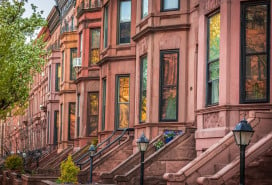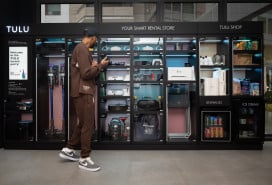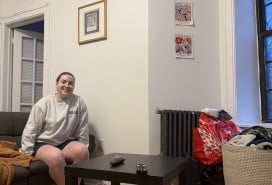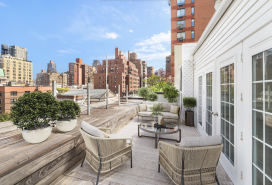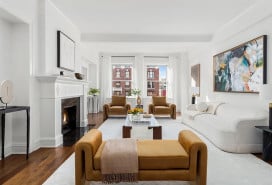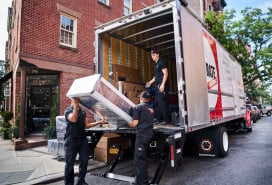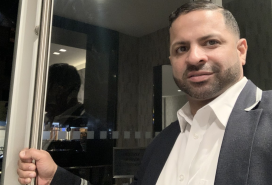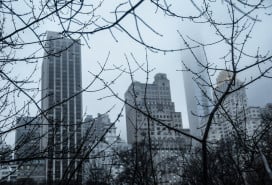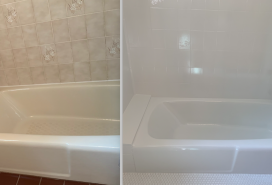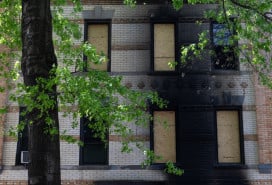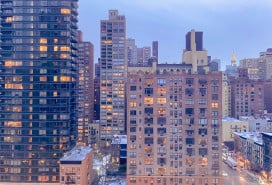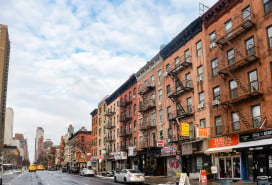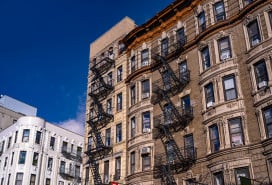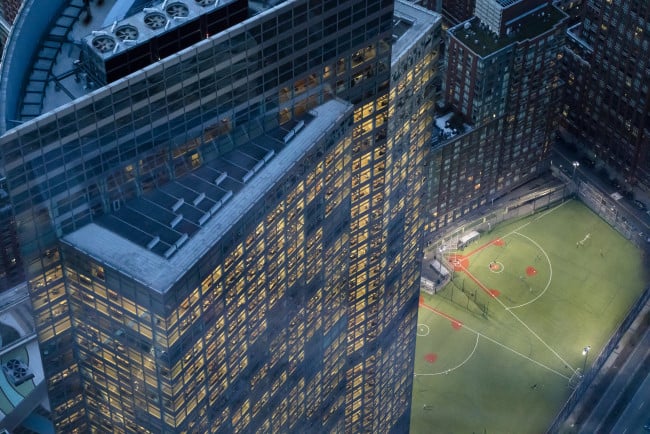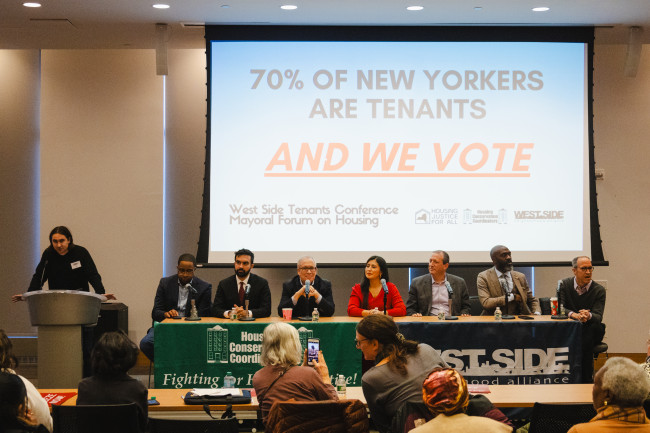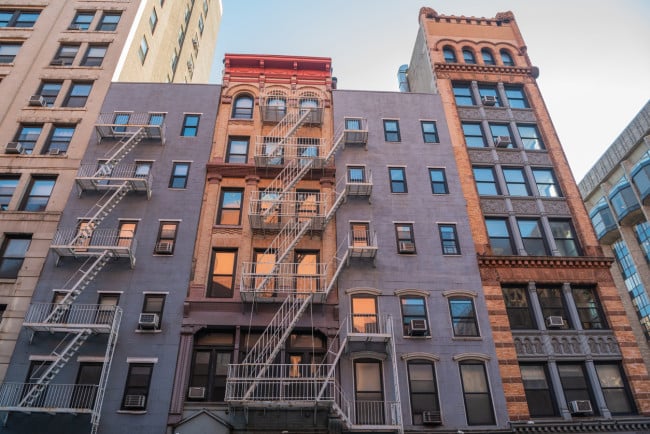Cuomo’s attack on Mamdani’s $2,300 apartment brings rent stabilization into the spotlight
- The former governor said that Mamdani doesn’t have a right to live in his apartment
- But only renters who are applying to housing lotteries need to fall into income brackets
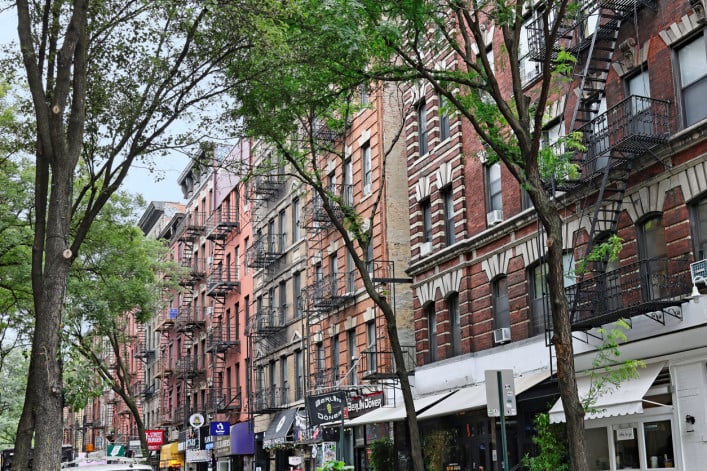
Cuomo proposed a law banning landlords from leasing rent-controlled units to "the wealthy."
iStock
A fight on social media between two New York City mayoral candidates, former Governor Andrew Cuomo and Assembly member Zohran Mamdani, highlights persistent misconceptions about affordable housing.
Mamdani is leading runner up Cuomo by 19 points according to a new poll and Cuomo’s social media account targeted Mamdani’s own housing situation, seemingly implying that Mamdani doesn’t have a right to live there. He posted on X over the weekend: “Somewhere last night in New York City, a single mother and her children slept at a homeless shelter because you, assemblyman @ZohranKMamdani are occupying her rent controlled apartment.”
He went on to point out that Mamdani pays $2,300 a month for an apartment in Astoria. (Cuomo, for his part, rents an Upper East Side apartment for $8,000 a month.)
Cuomo called on Mamdani to move out immediately. In a separate post, he announced he will propose legislation called “Zohran’s law” that would prohibit landlords from leasing rent-controlled units to “the wealthy” and require them to find tenants for whom rent will be at least 30 percent of their income.
Criticism of Cuomo’s “means testing” proposal was swift and opponents recalled his efforts to stall rent reform and the loss of tens of thousands of regulated units while he was governor of New York.
Comptroller Brad Lander, who ran in the Democratic primary for mayor and cross-endorsed Mamdani, posted in response on X, “True: @zohranmamdani lives in 1 unit of rent-stabilized housing. Also true: @andrewcuomo presided over the loss of 96,064 units of rent-stab housing. And killed NY’s program helping people move out of shelter. Moral clarity: Andrew, time to move out.”
Prior to the rent reforms of 2019, landlords could take units out of rent-stabilization if the legal rent reached a certain threshold. The incoming tenant would be charged a market rent.
“From 1997 to 2019, high-rent deregulation—which Cuomo renewed—gave landlords a license to terrorize tenants. Seniors on fixed incomes were threatened with eviction for not producing years of tax returns, and immigrant tenants were harassed with demands for papers they didn’t have,” said Darius Gordon, executive director of the Met Council on Housing.
The response from NYC’s largest rent-stabilized landlord lobbying group, the New York Apartment Association, to Cuomo’s plan so far appears to be lukewarm, Gothamist reported. Instead, NYAA Executive Director Kenny Burgos pointed to concerns about landlords’ ability to maintain their buildings and manage debts under Mamdani’s plan to appoint Rent Guidelines Board members who would freeze rent.
Mamdani has been put on the offensive by the attack, which he called “petty vindictiveness” and blamed the former governor and his real estate developer supporters for the city’s housing shortage, The New York Times reported. “I believe that government’s job is to guarantee dignity for each and every New Yorker, not determine which ones are worthy of it,” he said at a press conference on Tuesday.
Below are some of the assumptions about affordable housing in NYC that the spat on X brought to light and the more nuanced reality for each. For a more in-depth look at rent-stabilized housing, Brick Underground’s guide is being updated and will be republished tomorrow.
Assumption #1: Rent-stabilized apartments are affordable.
Reality: You may find below market-rate rents, but rent-stabilized units are not necessarily affordable. You may even find luxury units, like this two-bedroom in Hudson Yards that rents for $8,860 a month.
The advantage of a rent-stabilized apartment is its stability: rent increases are capped and lease renewals are nearly automatic. These factors help eliminate the shock and disruption of extreme rent increases and having to move because your landlord declined to renew your lease.
Annual rent increases are set by the Rent Guidelines Board, a group of nine mayoral appointees that meets every June to vote on hikes for one- and two-year leases. This year, the RGB approved increases of 3 percent for one-year leases starting between Oct. 1st, 2025 and Sept. 30th, 2026. It also approved increases of 4.5 percent on two-year leases during the same period.
For renters who land a rent-stabilized unit in a new development through a housing lottery, this is a way to live in an upscale, amenitized building, with the protections of automatic lease renewals and limited rent increases.
Assumption #2: Rent-stabilized apartments have income restrictions.
Reality: Only renters who are applying to housing lotteries need to fall into required income brackets, and even then, they can range into high figures. For this housing lottery for 212 units in the Wakefield section of the Bronx, households that earn $19,235 to $160,720 are eligible to apply.
Housing lottery apartments are set aside for New Yorkers earning a percentage of the area median income (AMI)—a metric that depends on how many people you live with—it is typically expressed as a range, such as 40 to 100 percent of AMI. Currently the AMI for NYC is $129,600 for a two-person household.
For other rent-stabilized units, it's just a matter of unearthing the listing and submitting your application.
Mamdani earns $142,000 a year as a state assembly member. He said he landed the apartment when he was making $47,000 and has said he intends to leave.
To Allia Mohamed, CEO of apartment listing and review platform openigloo, the debate about who qualifies to live in a rent-stabilized apartment is a distraction from the real issue: The lack of affordable housing.
“Without question, the scenario exists: wealthy people do live in rent-stabilized apartments,” she said. The only solution is to build more affordable housing. “If we had more we wouldn’t be concerned with a few high-income renters,” she said.
“The reason we have a housing crisis is not because someone who earns over $100,000 has been living in a rent-stabilized apartment,” Mohamed added.
Assumption #3 Rent controlled is the same thing as rent stabilized
Reality: Cuomo used the terms interchangeably but they are very different.
Rent control applies to just 16,000 apartments in properties built prior to 1947 that have been continuously occupied since 1971. Notably, rent controlled units are under state, not city oversight with rent increases set by New York’s Division of Housing and Community Renewal.
The rent-stabilization program is one of the city’s initiatives to preserve affordable housing. In 2019, protections for tenants in rent-stabilized apartments were increased under the Housing Stability and Tenant Protection Act, making it more difficult for landlords to take affordable apartments out of the program.
Assumption #5: Rent-stabilized apartments are scarce
Reality: There are nearly 1 million rent stabilized apartments in NYC, representing about half of all units. The reason they feel scarce is that rental listings do not always make it clear that the unit is stabilized. Another reason: Many units are only available through the housing lottery, which makes them feel like they are out of reach.
And even though landlords are supposed to include a rent-stabilization rider in all new leases and renewals informing tenants of their legal rights, that’s not how it always works. Landlords don't always tell prospective renters about the status of the apartment—and newcomers may not know to ask.
Brick Underground has detailed guides to finding rent-stabilized apartments and how to apply to the housing lottery.
Assumption #4: A rent freeze applies to all apartments
Reality: It would be helpful if every time someone mentioned “rent freeze” they also said “for rent-stabilized apartments" but that’s just not how people speak, mayoral candidates included.
When Mamdani is talking about a rent freeze, he is talking about rent-stabilized units, not market-rate units.
More precise language would be helpful, Mohamed said. Lots of New Yorkers don’t understand what rent stabilization means. She pointed out that many renters do not even know if they live in a rent-stabilized unit (openigloo and Brick Underground have resources to help you determine this.) Plus: “you have to live in the apartment in order to get the rent history,” she said.
Landlords of rent-stabilized units already face limits on how high they can raise rents, and so do some market-rate landlords, thanks to the new Good Cause Eviction law, which enables qualified tenants to challenge a rent hike under the current limit of 8.82 percent.
If Mamdani is elected, implementing a rent freeze would require several steps, as Brick previously reported—he’s not in a position to unilaterally institute one as soon as he takes office in January.
The mayor would appoint members of the board who would support a freeze and the first RGB vote on rent increase caps would take place over the summer, as it does each year. If approved, a freeze would go into effect in October 2026 for leases being renewed and vacancies occurring on or after Oct. 1st of 2026 through Sept. 30th of 2027.
You Might Also Like


